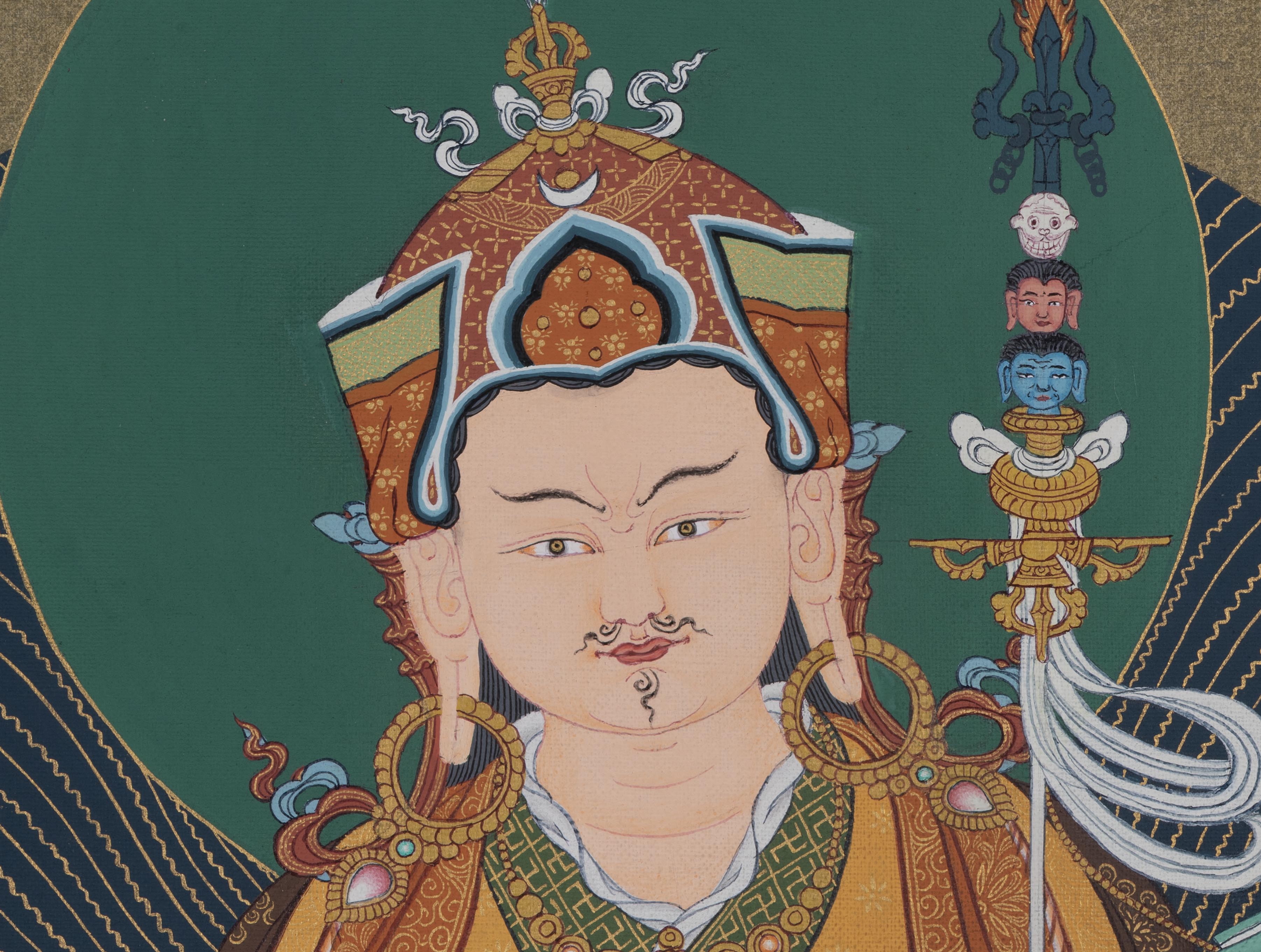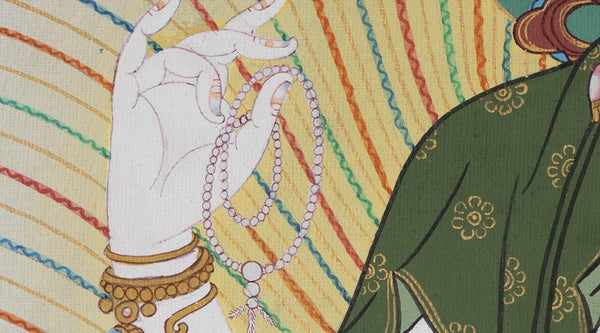“If you want to know your past life, look at your present condition.
If you want to know your future life, look at your present actions.”
― Padmasambhava
The Lotus Born
Guru Rinpoche Thangka is one of the most popular in this art form. It is because Guru Rinpoche is not just an absolutely enlightened Buddha. He has also manifested as one of the greatest sages of the Vajrayana Buddhist world. He had a miraculous birth that did not involve human parents. He served infinite beings for millenniums through the power of his wisdom and compassion. He remains in Zangdok Palri Pureland in the body of light, where he manifested.
The rays of blessing light of the Buddha of Infinite Light touched a lotus in the Milk Ocean in the Southwest direction from Bodhgaya. That was twelve years after the Maha Parinirvana of the Buddha. As a result, Guru Rinpoche was born miraculously in that lotus. He had a “lotus birth" without human parents. This is why he is called Padmasambhava, the Lotus Born.
Guru Rinpoche Thangka: Iconography
Guru Rinpoche’s thangkas are very meticulous, like other thangkas of Tibetan deities. It is iconographically accurate and has incredibly fine detailing. Guru Rinpoche Thangka is a high-quality thangka. One is able to see the detailed art lining and goldwork. Padmasambhava’s thangkas typically depict him as being seated in the center of the thangka with a crossed leg holding a vajra in his right hand, and in his left hand, he holds a skull-cup brimming with nectar. It contains the vase of longevity that is also filled with the nectar of deathless wisdom.
This iconography represents his status as an emanation of Amitabha. Amitabha appears as Padmasambhava's divine exemplar, and immediately above him in the upper register of most thangka paintings. He is also clad in peculiar brocade robes and distinctive Tibetan style robes. There are the Sun and Crescent moon on his tantric cap that signify his Yogic attainments. The surmounting eagle feather represents his Great Perfection. Dzogchen, the crown jewel of his Tantric repertoire. This thangka is done following Buddhist text and iconography detail to make sure it presents all the right attributes for one’s meditation practice.
Consorts and Manifestations
Some Guru Rinpoche Thangkas depict him seated between consorts while some show all of his eight manifestations. The Eight Manifestations of Guru reflect his ability to appear according to different needs and demands. In fact, they are called in Tibetan Guru Tsen Gye, the eight ‘names’ of the Guru, each manifestation demonstrates a different principle.

Some thangkas depict Guru Padmasambhava at the center in the deep blue lake, accompanied by his two prime consorts Yeshe Tsogyal and Mandarava. Princess Mandarava is from India whilst Queen Yeshe Tsogyal comes from Tibet. He is surrounded by his 8 major manifestations. On top is Samantabadra, the primordial Buddha.
“Transcendent renunciation is developed by meditating on the preciousness of human
life in terms of the ocean of evolutionary possibilities, the immediacy of death, the
inexorability of evolutionary causality, and the sufferings of the ignorance-driven,
involuntary life cycle. Renunciation automatically occurs when you come face-to-face
with your real existential situation, and so develop a genuine sympathy for yourself,
having given up pretending the prison of habitual emotions and confusions is just fine.
Meditating on the teachings given on these themes in a systematic way enables you to
generate quickly an ambition to gain full control of your body and mind in order at least
to face death confidently, knowing you can navigate safely through the dangers of further
journeys. Wasting time investing your life in purposes that “you cannot take with you”
becomes ludicrous, and, when you radically shift your priorities, you feel a profound
relief at unburdening yourself of a weight of worry over inconsequential things”
― Padmasambhava, The Tibetan Book of the Dead


